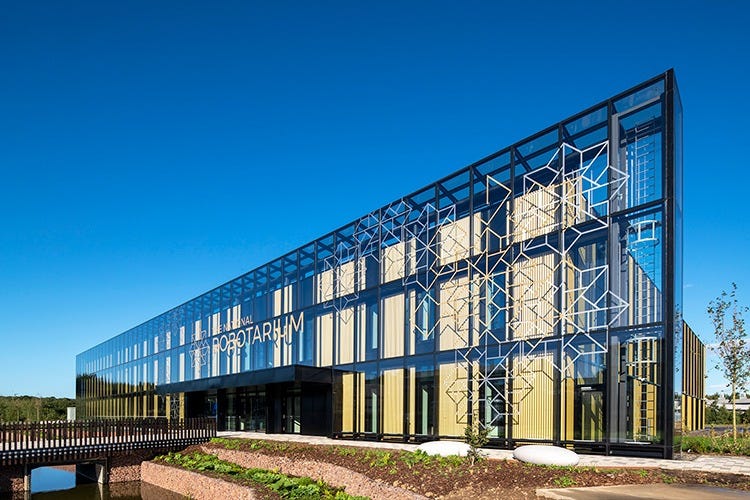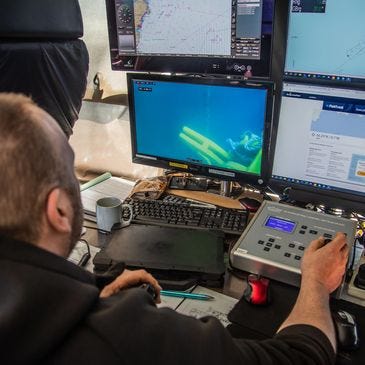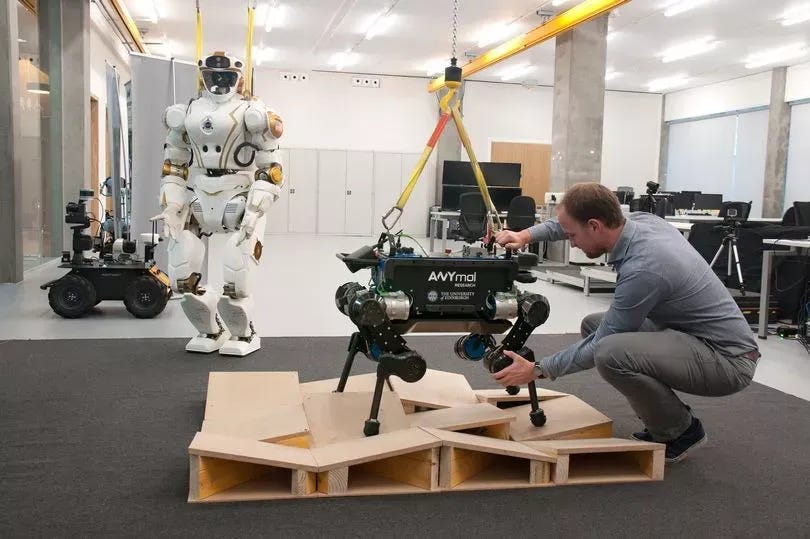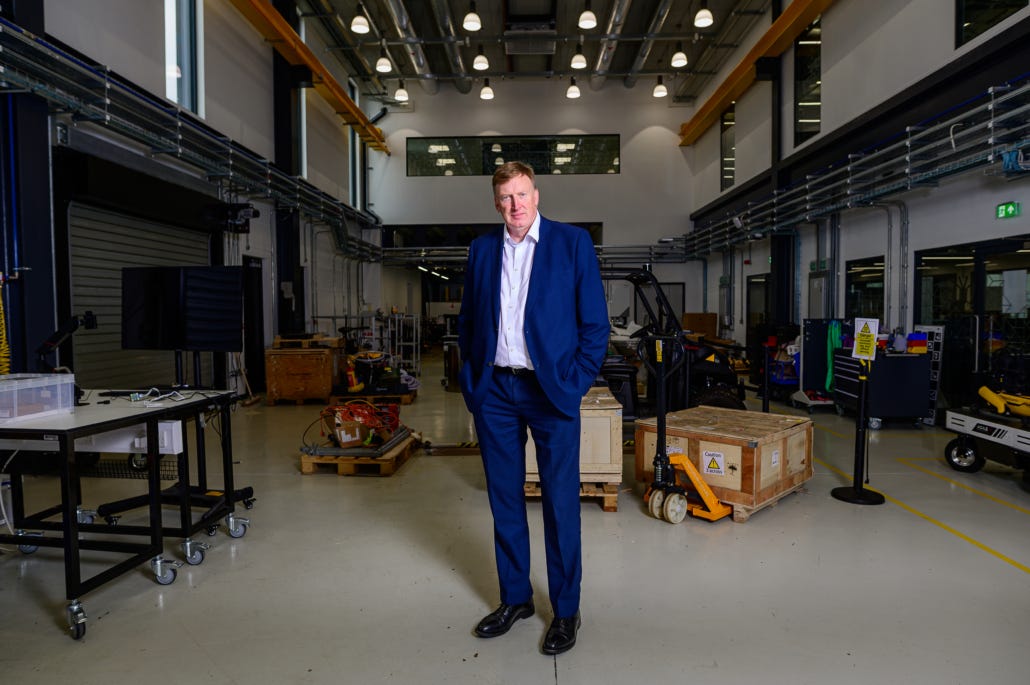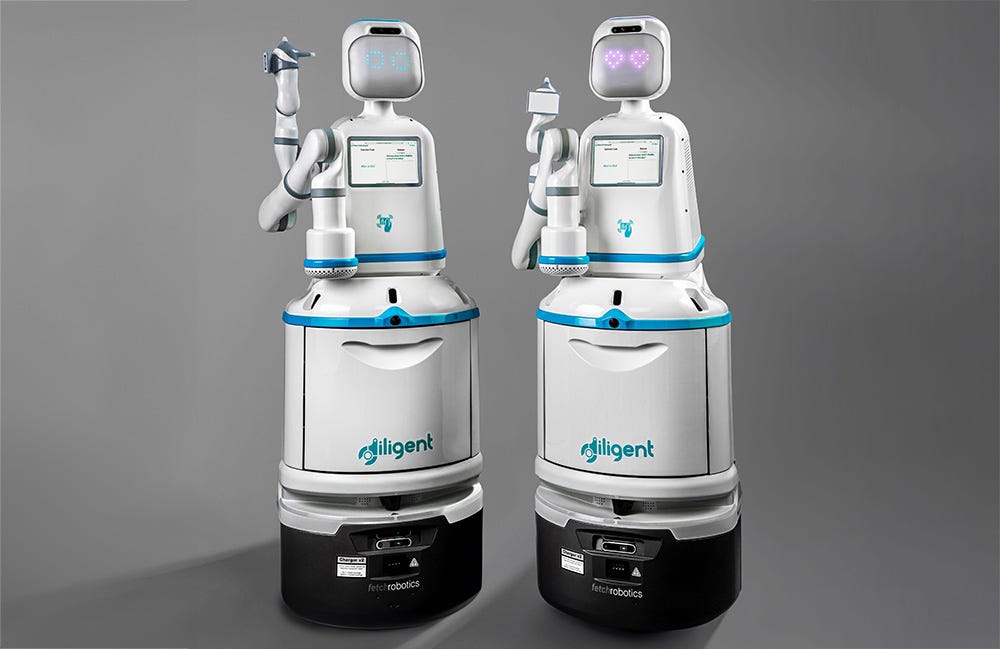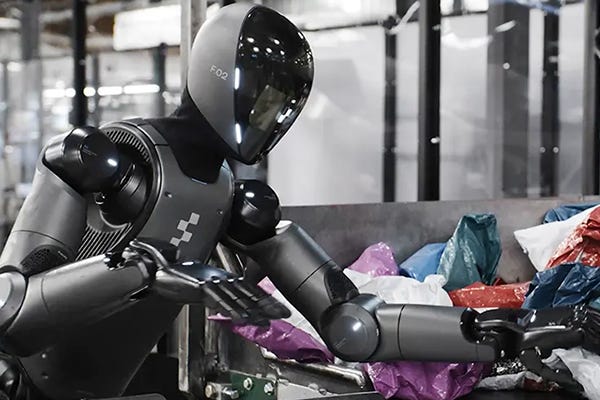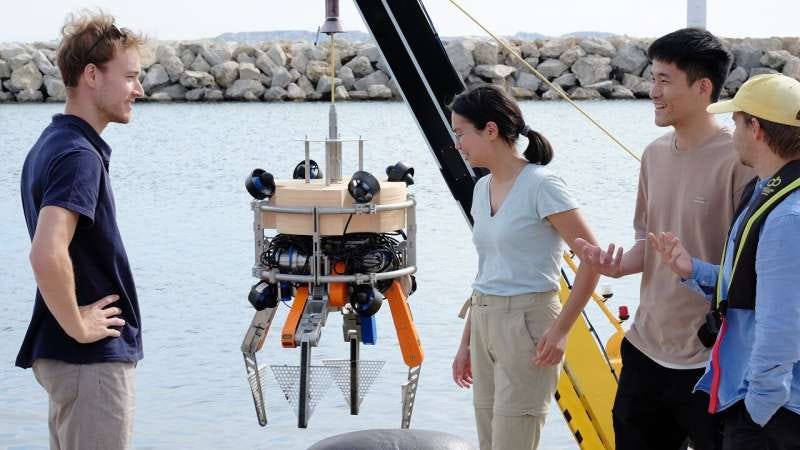Scotland’s Bid to Shape Robotics
From healthcare to subsea energy, a Scottish robotics ecosystem is emerging—rooted in research, tempered by weather, and guided by standards.
“We are more than we imagine ourselves to be.” — Robert Louis Stevenson
On certain mornings in Edinburgh, if you stand outside the National Robotarium at Heriot-Watt and watch the light burnish the Pentlands, you can glimpse a different kind of Scottish industry coming into focus. It is quieter than shipyards, more patient than oil, and—if the people here have their way—just as formative: robots learning to live with us, and we with them.
Inside, the building is part lab, part staging ground. Researchers are rehearsing the future in practical scenes: a mobile manipulator trundles through a mock apartment designed for assisted living; a dexterous arm threads sutures on a benchtop; a squat, stubborn rover practices navigating the sorts of messy, human places that defy neat engineering diagrams. Scotland’s pitch, in these rooms, is not simply that it can build clever machines. It’s that it can build trustworthy ones, with a temperament for the North Sea and the NHS waiting room alike. The National Robotarium says it exists to push robotics and AI from lab to market, and, crucially, to do it with people squarely in the loop.
The building has already become symbolic: not only a hub for robotics, but a demonstration of Scotland’s larger ambition to frame its technological future around safety, dependability, and inclusion. The “lighthouse” metaphor holds—less a gleaming tower of hype than a steadying presence on the horizon. The wager is that reliability, not flash, will distinguish Scotland’s robotics ecosystem.
Orkney and the Blue Frontier
A few hundred miles north, a sister idea has taken hold on the archipelago whose winds and tides make energy companies reach for new verbs. On Orkney, the “Blue Robotarium” is being set up as a proving ground for robots that work where humans can’t linger—beneath waves, amid kelp, around turbines anchored in hostile water.
If Edinburgh is writing the domestic chapters of the story, Orkney is drafting the maritime ones. The mandate is clear: integrate robotics, AI, and data management into the operational framework of the global blue economy. The promise is brisk and salt-sprayed: faster offshore inspections, safer maintenance, and autonomous systems that respect the sea as much as they exploit it.
This expansion into Orkney underscores how Scotland is treating robotics not as a niche but as an ecology. Each region contributes a specialty—urban healthcare and eldercare in Edinburgh, offshore and subsea applications in Orkney—bound together by the shared ambition to build systems that thrive in demanding environments.
A Legacy of Artificial Intelligence
Edinburgh did not arrive at this moment by accident. For six decades, the University of Edinburgh has cultivated a stubborn AI lineage—one of Europe’s largest clusters—now anchored by the Bayes Centre and the broader Data-Driven Innovation (DDI) network. This is an unusual campus-to-campus bridge between data and embodiment, one that makes Edinburgh’s AI heritage newly physical.
The Edinburgh Centre for Robotics, spanning Heriot-Watt and Edinburgh, keeps the focus on what really matters when silicon meets skin: safety, interaction, and systems that can explain themselves. In an era when companies boast of disruption, the local rhetoric here is noticeably different. It’s about coexistence, transparency, and accountable design.
This heritage of patient AI work positions Scotland to stand out. Its scholars have long worked at the intersection of computer science, philosophy, and engineering. As robots move from isolated test beds into daily life, that interdisciplinary patience may prove to be Scotland’s sharpest edge.
Health, Manufacturing, and the Measured Approach
If you want a picture of how Scotland intends to use robots, don’t start with factories—start with wards. In a health service stretched thin, teams here are teaching social robots to coach rehab exercises, to encourage where human time runs short, and to hand off to clinicians rather than replace them.
Elsewhere, engineers at the National Manufacturing Institute Scotland (NMIS) are refining ultrasonic tools for robotic surgery, broadening the set of procedures where machines can extend the hands of surgeons rather than pretend to be them. These projects embody a cautious thesis: augment, don’t overclaim; measure, then scale.
This patient approach extends into broader manufacturing. The Robotarium’s labs are built not only for invention but for testing and validation—critical steps in moving technology into adoption. Scotland is framing itself less as a startup petri dish and more as an incubator of dependable systems.
Robots of the Land
Step outside the city and the experiment continues in fields and barns. At Scotland’s Rural College (SRUC), researchers explore how autonomy might lighten the literal load—from animal health simulators that train riders and vets to mechatronic tools that adapt to agricultural cycles.
It is here that robotics intersects with one of Scotland’s oldest industries. Automation is not presented as a replacement for farming knowledge but as a set of additional tools, tuned to the realities of seasons, stock, and soil.
The research reflects a humility rare in the robotics world. Rather than promise agricultural revolutions, these teams propose incremental improvements that reduce strain, improve monitoring, and enhance resilience against labor shortages. It is a slow story, but one that may endure longer than flashier alternatives.
The Call for a Cluster
Manufacturing remains part of the claim. Scotland’s industrial base is smaller than it once was, but it is not timid. The Robotarium has argued that the country needs more than excellent research: it needs robotics clusters that run the full stack, from precision machining to certification and service.
Recent policy commentary has sharpened the point: without a deliberate cluster, Scotland risks watching the robotics revolution from the bleachers. The call for a Scottish Robotics Cluster has moved from idea to explicit plea. Industry leaders warn that without concerted infrastructure, the nation will fall short of its potential.
But the argument is not nostalgia. A sovereign capacity to design, test, and manufacture robots is being framed as an integrated energy policy, health policy, and industrial strategy. Clustering is cast not as a luxury but as a necessity.
The Pen and the Standard
What sets Scotland apart is not only what is being built, but how it might be governed. This is a country that takes writing seriously. From Hume to Stevenson, Scotland has prized clarity, narrative, and structure. Today, researchers argue that this literary tradition could evolve into something newly practical: a culture of standards-making.
Standards are, at heart, a form of public writing. They demand patience, empathy, and revision. Edinburgh’s AI and robotics community—used to refereed papers and formal verification—already writes like this. The DDI network and the Robotarium’s policy wing are, in effect, rehearsal spaces for “research to standards.”
Such work is not glamorous. However, in an era where robotics headlines are associated with billion-dollar valuations, standards are the footnotes that make the headlines viable. Scotland’s wager is that by taking the unglamorous work seriously, it can shape not just devices but the global rules of engagement.
A Future Written in Scotland
Walk another corridor in the Robotarium and you’ll meet the next generation: doctoral students toggling between proofs and prototypes, clinicians loading anonymized datasets into fall-risk detection models, and engineers swapping maritime datasets with Orkney colleagues chasing safer turbine maintenance windows. The line between “AI” and “robotics,” once crisp, is smudging into practice.
Every ecosystem tells itself stories about who it is. Scotland is older and steadier than most. It knows what it means to make hard things in hard weather; it remembers the value of institutions that outlast product cycles; it is comfortable with ambition that remains careful.
The building on the city’s edge looks, at times, like a lighthouse. It doesn’t tell ships where to go; it tells them how not to break. That is the Scottish contribution now being rehearsed: robots for wards, fields, factories, and seas—framed by standards, tempered by context, and written in a language the world might adopt.
Robot News Of The Week
Swisslog Healthcare, Diligent Robotics to bring last-mile delivery to hospitals
Swisslog Healthcare has formed a strategic alliance with Diligent Robotics to bring autonomous last-mile delivery robots to U.S. hospitals. The partnership integrates Swisslog’s transport and pharmacy automation systems with Diligent’s Moxi robots, which handle deliveries too large or sensitive for pneumatic tubes.
The companies aim to improve hospital logistics, streamline workflows, and free up staff for patient care. Swisslog said the move strengthens its leadership in healthcare transport automation, while Diligent noted Moxi’s proven success—over 1 million deliveries, including 300,000 in pharmacies, across 25 hospitals.
Both firms emphasized that demand for service robots is growing rapidly, and their combined expertise will deliver smarter, safer, and more efficient solutions for hospital operations.
General-purpose humanoid developer Figure AI exceeds $1 billion after Series C funding round
Figure AI has raised over $1 billion in Series C funding, pushing its valuation to $39 billion. The round, led by Parkway Venture Capital with backing from NVIDIA, Brookfield, Intel, LG, Salesforce, T-Mobile, and others, will accelerate the company’s push to scale general-purpose humanoid robots into real-world use.
The funding supports expansion of Figure’s BotQ manufacturing, GPU infrastructure for training its Helix AI platform, and large-scale data collection to improve robot perception, reasoning, and control.
Figure, which raised $675M at a $2.6B valuation in 2024, said this milestone validates its leadership in humanoid robotics and marks a turning point toward deploying robots in homes and businesses.
Rethink Robotics shuts down — again
Rethink Robotics, once a pioneer in collaborative robots, has shut down for the second time.
Founded in 2008 as Heartland Robotics by Rodney Brooks and Ann Whittaker, the company gained attention with its Baxter and Sawyer cobots but struggled with performance issues. After going bankrupt in 2018, it was acquired by Hahn Group and later became part of United Robotics Group (URG).
Relaunched in 2024 with new cobots and mobile robots, Rethink again faltered as products weren’t market-ready and investors pulled back funding. URG filed for bankruptcy in 2025, ending Rethink’s U.S. operations. The future of its IP and latest models remains unclear, though analysts expect the cobot sector to rebound.
Robot Research Of The Week
Autonomous underwater waste collection could soon be a reality
Researchers at the Technical University of Munich (TUM) have developed an autonomous diving robot that detects and retrieves marine litter as part of the EU’s SEACLEAR project. The system, tested in Marseille’s port, combines a service boat, drone, search robot, and the TUM sub to clean underwater waste.
Using AI, sonar, and cameras, the robot identifies debris in 3D, then collects it with a powerful yet sensitive four-finger gripper capable of lifting up to 250 kg. Connected by cable for power and data, the sub can haul large objects like e-scooters, bikes, and nets to the surface.
TUM says autonomous cleanup becomes cost-effective at depths beyond 16 meters, offering a scalable way to reduce marine litter in ports and harbors worldwide.
Robot Workforce Story Of The Week
ARM Institute Hosts Free Robotics Careers Workshop for Manufacturing Day
The ARM Institute will host a free workshop on October 28 from 6:30 PM to 7:45 PM US Eastern to help students and job seekers explore robotics careers in manufacturing.
With the National Association of Manufacturers projecting a shortage of 3.8 million jobs in the coming years, robotics skills are increasingly in demand to both fill gaps and create higher-paying roles. The workshop will provide job search and resume tips, insights from hiring employers, and guidance on how to connect to robotics training and career opportunities through RoboticsCareer.org.
Participants will also have the chance to hear from HR professionals, employers seeking robotics talent, and ARM Institute experts, making the event a practical step for anyone pursuing a career in robotics within manufacturing.
Robot Video Of The Week
Pratt & Whitney’s Eagle Services Asia facility in Singapore has deployed “Alfred,” a robot that automates the assembly of high-pressure compressor rotors for Airbus A320neo engines.
Alfred handles heating, cooling, and stacking tasks with precision, cutting assembly time in half and freeing operators for more complex work. The system boosts safety, efficiency, and reliability while reducing waste and rework.
Born from a technician’s idea in 2021, Alfred was fully operational by 2023. Pratt & Whitney now plans to expand automation across its global MRO network, with a second robot, “Athena,” expected to join in 2025.
Upcoming Robot Events
Sept. 23 Humanoid Robot Forum (Seattle, WA)
Sept. 27-30 IEEE Conference on Robot Learning (Seoul, KR)
Sept. 30-Oct. 2 IEEE International Conference on Humanoid Robots (Seoul, KR)
Oct. 6-10 Intl. Conference on Advanced Manufacturing (Las Vegas, NV)
Oct. 15-16 RoboBusiness (Santa Clara, CA)
Oct. 19-25 IEEE IROS (Hangzhou, China)
Oct. 27-29 ROSCon (Singapore)
Oct. 29-31 Intl. Symposium on Safety, Security, and Rescue Robotics (Galway, Ireland)
Nov. 3-5 Intl. Robot Safety Conference (Houston, TX)
Dec. 1-4 Intl. Conference on Space Robotics (Sendai, Japan)
Dec. 11-12 Humanoid Summit (Silicon Valley TBA)
Mar. 16-19 Intl. Conference on Human-Robot Interaction (Edinburgh, Scotland)
Mar. 29-Apr. 1 IEEE Haptics Symposium (Reno, NV)


